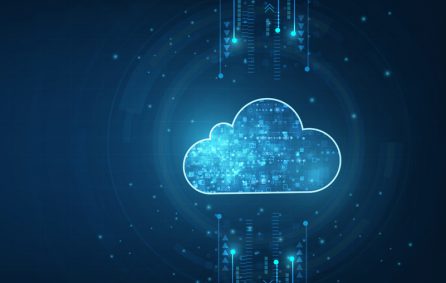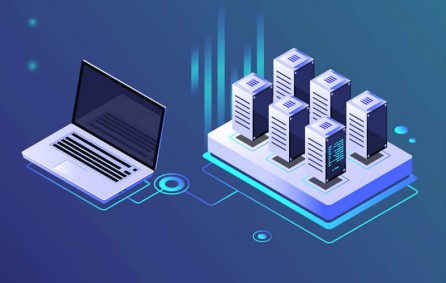Adopting the Right Cloud Model for Your Enterprise
In today’s world of continuous technological evolution, digital transformation has become inevitable for all organizations. Leveraging the Cloud platform plays a key role as a catalyst in this transformation. Companies measure their performance through a cloud enabled business model that differentiates their solutions over their competitors.
Cloud based digital transformation involves moving a company’s infrastructure from its own data centers to those operated by the cloud providers. Cloud migration offers multiple advantages such as flexibility, agility, scalability, security and productivity.
Cloud Deployment Models
There are four main types of cloud environment or cloud deployment models for enterprises to run their applications based on their specific requirements. These include Public Cloud, Private Cloud, Hybrid Cloud and Community Cloud.
- Public Cloud: In this model the computing infrastructure is located on the premises of the Cloud Service Provider (CSP). It is the most economical model for organizations who do not want to invest in IT infrastructure as capex. The benefits of public cloud are instant infrastructure availability with ease in scalability, reliability and cost effectiveness.
- Private Cloud: In this model organizations are provided with on premise dedicated infrastructure. They are responsible for the software and infrastructure management as the CSP does not provide cloud management services. Private cloud provides greater security and is customizable as per the user requirements.
- Hybrid Cloud: Hybrid cloud environment provides the benefits of both public and private cloud models by allowing the two platforms to interact seamlessly. Hybrid cloud provides a tailored solution that is flexible, scalable and cost effective.
- Community Cloud: This is a collaborative, multi-tenant platform shared by users of the same industry and having similar requirements pertaining to security and compliance. This is less commonly used compared to the other three models.
Cloud Service Models
Cloud service models can be classified into three types – Infrastructure as a Service (IaaS), Platform as a Service (PaaS) and Software as a Service (SaaS).
- Infrastructure as a Service (IaaS): It is the most comprehensive and flexible type of cloud service. It offers infrastructure including virtual servers, operating systems, network and storage drives. It is suited for small and medium sized businesses looking for a cost-effective IT solution.
- Platform as a Service (PaaS): In this model the CSPs provide the infrastructure and software framework while businesses can develop and run their own applications. Using PaaS, customers can access the development tools as required without needing to purchase them.
- Software as a Service (SaaS): It is a fully developed software solution available for use on a subscription basis. In this model the CSP manages the cloud infrastructure and offers the applications which can be accessed from anywhere through a web browser.
6 R’s of Cloud Migration
A company’s cloud migration strategy can involve any of the six options namely rehosting, replatforming, refactoring, repurchasing, retiring and retaining. These are collectively known as the 6 R’s of cloud migration.
- Rehosting or lift-and-shift: This is the simplest and most common path for enterprises new to cloud computing. It involves dropping applications into the new hosting environment without any modifications to the code or architecture.
- Re-platforming: This involves making cloud optimizations without modifying the core app architecture. It is also known as lift-tinker-and-shift.
- Re-factoring: Re-factoring or re-architecting involves rebuilding applications from scratch to leverage the cloud-native capabilities. This helps to add features and performance that would not be possible in the application’s existing environment. Re-factoring is the most expensive and time-consuming strategy.
- Re-purchasing: Re-purchasing involves purchasing new services or products and incorporating a few changes in the cloud architecture. It is useful if an organization is already on the cloud and wants to transition a significant workload.
- Retiring: This involves removing applications that are no longer required prior to migrating to the cloud.
- Retaining: This strategy involves retaining applications that are essential for the enterprise but require refactoring before migration.
Conclusion
The focus on Cloud has increased over the past year because of the ongoing global pandemic. Workplaces have become decentralized with remote working becoming the new normal. This has led to a change in how businesses leverage cloud computing.
Gartner estimates that SaaS will be the largest market segment for end-user cloud IT spending and grow approximately at 16 percent rate to $117.8 billion this year. Similarly, PaaS spending is projected to increase at 26.6 percent to $55.5 billion while IaaS is expected to grow at 26.9 percent to $65.3 billion.
According to IDC, by 2022 over 90% of enterprises will be relying on a hybrid cloud solutions model that includes on-prem, dedicated private clouds, multiple public clouds and legacy platforms.
techcarrot is a leading cloud migration services provider enabling customers with a smooth transition to the cloud ecosystem. We offer a range of cloud migration services from consulting, defining the cloud strategy, installations, migration and advice, to ensure that you have the right infrastructure and cloud-based solutions in place with IaaS, PaaS or SaaS.
If you are looking to adopt cloud services for your business, contact us to know how we can be the right partner for you.







